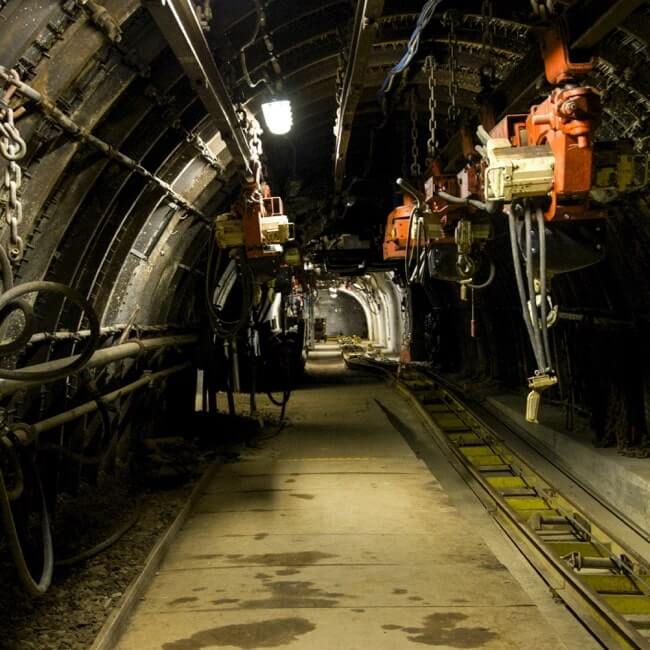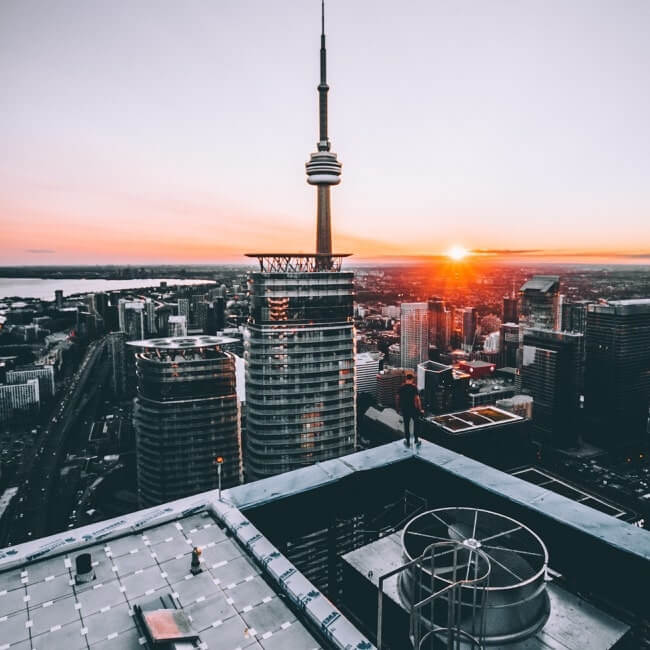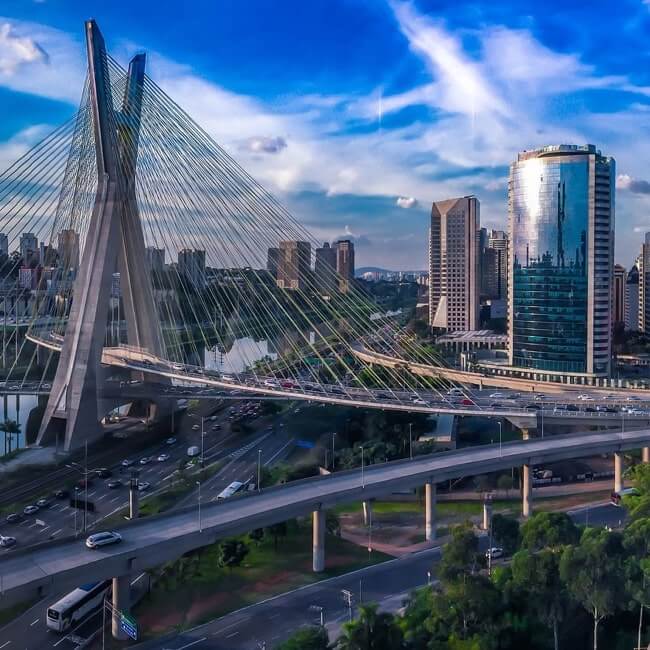How mining investors are looking at Latin America
Although the competition for critical minerals between China, the US and the EU is increasingly pushing investors to look at Latin America's mining potential, the arrival of private capital to the region is not that dynamic.
In the latest Fraser Institute report, the region experienced the largest drop in its attractiveness score for mining investment, falling almost 20 points. It had the second-lowest rating for any world region.
In addition, although Chile's portfolio of mining projects amounts to US$65.7 billion for 2023-32, Brazil’s US$64.5bn for 2024-28 and Peru’s US$54bn from 2022, the projects are not currently sufficient to supply the critical minerals for the global energy transition.
The demand for clean energy minerals will triple by 2030 and quadruple by 2040 compared with 2023, reaching close to 40Mt, according to the International Energy Agency (IEA).
In global terms, private capital operations in Q1 in the mining industry decreased by 70% compared to the 1Q23, according to consulting firm Global Data.
In this interview, Brian Nogy, director of natural resources and corporate finance for Latin America at Sumitomo Mitsui Banking, reveals how one of the main mining investment banks is evaluating Latin America.
BNamericas: Considering rising demand for lithium, copper and other critical minerals, how much investment is flowing into Latin America’s mining industry?
Nogy: The region is blessed with major resources of many minerals, but investments have become more complex, dealing with local governments, communities, water rights, and environmental and geopolitical issues. All these factors make investments difficult. In Latin America, many projects need to be accelerated because there have been a lot of factors, such as COVID-19, that have slowed down the mining investment cycles.
If we look at 2015, when we had the last energy bubble burst for non-energy minerals, price-wise, we're still far behind an investment cycle when it comes to drilling exploration up to getting to the feasibility or the execution of projects. This is generalized across the world, not just in Latin America.
So, it's important to accelerate investments, for which a combination of governments and corporations will be necessary, that together pull the trigger for these investments to be developed. We know where the resources are, but investments are stagnant.
BNamericas: Who is most interested in injecting capital?
Nogy: We’ve seen potential mergers and acquisitions in the copper segment, with BHP looking at Anglo-American, but there are also companies looking for offtake agreements to obtain minerals for their production.
These could be OEMs [original equipment manufacturers] that need lithium for [electric] cars, or other elements for both automobiles and other industrial uses. Generally, there are investments from the private equity side as we’re seeing prices increase, so it could be a good opportunity for a medium-sized or minor investment.
But mining is still not considered sexy. People traditionally think it's dirty and don't understand current processing, so at the end of the day we see more investment in the energy sector in general. As mining becomes more adjacent to energy, we will see much more investment in these sectors to achieve the goals outlined in the Paris Agreement, for which much more minerals are needed.
BNamericas: With large M&A proposals, such as BHP's attempts to take over Anglo American's assets, will the industry see a reversal regarding small projects?
Nogy: In the precious metals sector, there are many junior miners that are being bought by majors, due to the limited amount of gold in the world. If you melted all the gold down, it would fit in one Olympic-sized swimming pool. That's why junior companies are needed to prospect and find reserves because the majors are focused on their own production.
But everyone seems to be in a stasis when it comes to investments or acquisitions of smaller companies. There are not many investments between now and 2030 in copper or other base metals. So, smaller companies are turning again to equity on the private credit side to achieve pre-feasibility or feasibility and then sell their projects or manage to get a capital injection from majors. We need greater acceleration if we want to close the gap in many minerals.
BNamericas: How does the increase in the price of copper, as seen in May, impact investor decisions?
Nogy: Copper is a cyclical commodity and the prices have been high before, but when we think of one shovel-ready copper project today in the region – there are none. This is due to the many environmental permits, water concerns, community rights and even transportation.
In addition, many reserves are at very high altitudes or in remote locations. All of this causes investment stagnation. When a corporation wants to make a multi-billion dollar investment, the board analyzes the internal rates of return. That is, copper prices are high now, but could take a hit after starting a US$3bn or US$4bn project.
The board and shareholders want returns and this causes paralysis in the market, where no one really advances in investments. Although there are cases such as state miner Codelco, which made several investments, they went mostly to existing brownfield assets and where infrastructure already exists.
However, for the greenfield projects, there is not the same corporate freedom to go and get board approval without being punished. That's why people prefer share buybacks and that's why we're stuck in a situation where we need investment, but it's hard to get approval.
BNamericas: What is required to boost investments in the Latin American mining industry?
Nogy: If we talk about Chile, Brazil, Peru or Argentina, there are many hoops to jump through to obtain environmental approval and put the shovel into the ground. It has become more complex to obtain those approvals. If we think about the lead time to reach production, on average 13 years, it's a long time to get the expected supply.
Obviously, the environment has to be part of this because there are local communities, water issues, etc. All of this must be sped up, with a real clear picture of what needs to be done. It depends on each country. It would be great if countries could come together and find some commonalities that would accelerate things.
This requires local, state, provincial or federal governance to pull all of that, and find the common themes and simplify the system to accelerate projects.
BNamericas: What types of critical minerals attract investors the most?
Nogy: In rare earths, [China] controls about 70% of the mining market and 80% of the refining market. I think that's going to change as people are politically looking for those kinds of metals.
Recently, Norway found a significant reserve of rare earth elements and I think we'll see a lot more of that with countries like the US, Japan or in the EU that are looking for investment opportunities in a way like nearshoring or a friendly country relationship where they can get these elements, since they no longer want to continue concentrating everything in China.
Regarding cobalt, there's also control of trade [DRC concentrates 70% of global extraction], but people want to analyze it particularly outside of Africa, especially because now that there is more talk about cobalt and nickel on the lithium batteries topic.
But there are companies that are analyzing niobium batteries. I mean, there are 12 different types of batteries or more, and we're still deciding which ones are the best and whether they'll use minimal cobalt or different combinations.
We are still at an early stage to define what is the most efficient way to use these metals in batteries. I think there won't be a clear winner in the battery race or regarding battery-related metals demand because of the different uses.
BNamericas: Will copper and lithium remain the preferences for investors as long as the best metals haven't been defined?
Nogy: The lithium price was US$70,000/t, now it's back to US$13,000/t. It's kind of a rollercoaster ride that affects shareholders. A lot of dividends are expected when prices are high, but at the same time it's not known when a downturn will come. Therefore, we seek the lowest possible cost of production.
Shareholders always want to be profitable. If we talk about electrification, copper is in everything. There are many datacenters in the US and throughout the Western Hemisphere, and the electrification they require is being closely analyzed, especially because it is known that there will be a copper deficit. That's why copper prices are where they are. We are still far from US$5/lb, now at US$4.50/lb but still a [very high] price.
BNamericas: Should investors in the copper market be concerned about the growth of recycling or the use of aluminum as a conductor in power lines?
Nogy: I don't think they are a threat. There are Brazilian companies that focus on aluminum for high-voltage power lines, which have been quite successful and now they’re expanding to the US. There's a market for it, but there will also be enough demand for copper for other things, as copper is still the best conductor of electricity apart from the precious metals found in [the concentrate].
Recycling is still a small percentage, in relation to demand, although a lot of scrap is going to Chinese smelters. Recycling of copper or aluminum will remain only one component in the market, unless we find a way to recycle things much more efficiently in terms of cost.
Subscribe to the leading business intelligence platform in Latin America with different tools for Providers, Contractors, Operators, Government, Legal, Financial and Insurance industries.
News in: Mining & Metals (Brazil)

Brazil's Vale steps up focus on reducing greenhouse gas emissions
The company’s efforts include a minority investment in a US-based startup.

Brazil's CSN unveils capex plans, output forecasts
The industrial conglomerate presented the investment plans and production forecasts at its investor day.
Subscribe to Latin America’s most trusted business intelligence platform.
Other projects in: Mining & Metals (Brazil)
Get critical information about thousands of Mining & Metals projects in Latin America: what stages they're in, capex, related companies, contacts and more.
- Project: Amargosa
- Current stage:

- Updated:
3 months ago
- Project: Lithium Carbonate Conversion Plant
- Current stage:

- Updated:
3 months ago
- Project: Lithium Concentrate Processing Plant Expansion
- Current stage:

- Updated:
3 months ago
- Project: Itinga (Bandeira and Outro Lado deposits)
- Current stage:

- Updated:
3 months ago
- Project: Tucumã project (ex Boa Esperança)
- Current stage:

- Updated:
3 months ago
- Project: Bahia
- Current stage:

- Updated:
3 months ago
- Project: Ariquemes (Bom Futuro)
- Current stage:

- Updated:
3 months ago
- Project: Jacobina Phase 4 Expansion
- Current stage:

- Updated:
3 months ago
- Project: Jacobina Phase 3 Expansion
- Current stage:

- Updated:
3 months ago
- Project: Massangana Tin Tailing Project
- Current stage:

- Updated:
4 months ago
Other companies in: Mining & Metals (Brazil)
Get critical information about thousands of Mining & Metals companies in Latin America: their projects, contacts, shareholders, related news and more.
- Company: Ministério de Minas e Energia da República Federativa do Brasil (MME Brasil)
-
Brazil's Mining and Energy Ministry, MME, is composed of four departments: the Oil, Natural Gas, and Biofuels Secretariat; Geology, Mining and Mineral Transformation Secretariat...
- Company: ASX Mineração
- Company: Nexa Resources S.A. (Nexa)
-
Large-scale integrated zinc producer Nexa Resources S.A. (Nexa) is a Brazilian metal mining company, formerly known as Votorantim Metals. The company is part of the local Votora...
- Company: MSM TOPAZ Engenharia e Projetos
-
The description contained in this profile was taken directly from an official source and has not been edited or modified by BNamericas researchers, but may have been automatical...
- Company: MIP Engenharia S.A. (MIP Engenharia)
- Company: Companhia Brasileira de Alumínio (CBA)
-
Companhia Brasileira de Alumínio (CBA), born in 1941 and headquartered in São Paulo, is a Brazilian aluminum producer part of the local conglomerate Votorantim. CBA mines and sm...
- Company: Alcoa Alumínio S.A. (ALCOA Aluminio Brasil)
-
Alcoa Alumínio, the Brazilian subsidiary of US aluminum giant Alcoa, produces primary aluminum, fabricated aluminum, and alumina. In addition to aluminum products and components...
- Company: Forship Engenharia (Forship Engenharia S.A)
-
Forship provides engineering solutions and services for industrial plants in the oil and gas, petrochemical, shipbuilding, electric power and mining industries, among others. Th...



